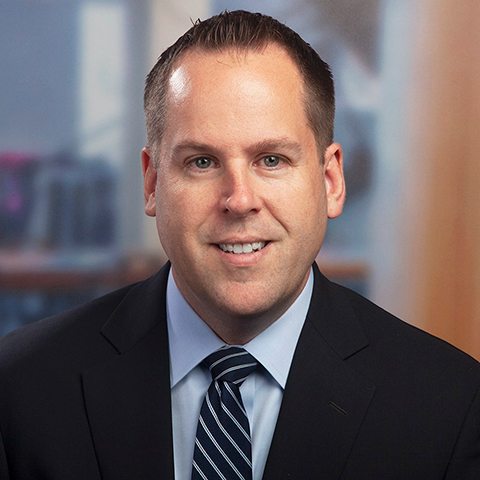Harnessing Growth and Seizing
Opportunity: The Future of
Workforce Benefits

Harnessing Growth and Seizing
Opportunity: The Future of
Workforce Benefits



July 2023
In 2021, LIMRA and Ernst & Young (EY) joined forces to explore the changing landscape of workforce benefits. During this time, the industry and society were experiencing significant transformation. The pandemic continued to disrupt everyday life, and employers were challenged on many fronts as they struggled to navigate the realities of the new working world. Many firms — particularly small firms — struggled with business continuity and related issues. Among workers, insurance, wellness, leave and other needs emerged.
Much has changed since we published our landmark study Harnessing Growth and Seizing Opportunity: The Future of Workforce Benefits in 2021. The pandemic has faded, and the work environment has begun to stabilize. Demographically, as the workforce becomes increasingly diverse, Millennials and Generation Z continue to grow and for the first time, represent a majority of workers, with expectations of them growing to more than 60 percent of the workforce by 2031. Economically, inflation emerged and remains a concern; interest rates remain relatively high, and recession continues to be a possibility. Given the continued war for talent and the ongoing economic pressures that companies face, more organizations are looking at their labor force in new ways, relying more on nontraditional workers, including gig, freelance and independent contract workers. These trends affect employers and employees — the workforce benefits marketplace — across multiple dimensions as they navigate the current environment.
As the workforce landscape for 2023 continues to unfold, carriers, distributors and other parties must continually adjust their value propositions to align with the realities of today’s dynamic environment. To help organizations meet this challenge, LIMRA and EY revisited the findings from our first study to examine whether the preferences and practices of employers and employees are “sticking” in a post-pandemic environment and whether new ones are emerging. Our refreshed research reveals that practices and preferences are not only sticking, but they are accelerating.
First, a more heterogeneous, fluid and virtualized workforce is here to stay, and it’s rapidly expanding. There are now five generations in the workforce, with a growing prevalence of Gen Z workers — each with unique needs and preferences — which presents challenges and opportunities in addressing those needs. Almost one-third of employers said that meeting the needs of the multigenerational workforce was a key challenge for them; 40 percent of organizations with 1,000 or more workers expressed this sentiment. Compounding the challenge is the move to hybrid work models. While remote work proved to be a viable short-term solution, many organizations began to experience drawbacks, particularly in knowledge-based occupations that benefited from in-person collaboration. New employee onboarding, training and mentoring suffered. Organizations are now exploring various remote and hybrid approaches in seeking to balance the needs of the business with a compelling value proposition to attract and retain employees.
Employers and employees are also looking to nontraditional work arrangements, such as gig, freelance and independent contract workers to address business needs. Our refreshed research finds that employers expect steady growth in the use of these workers in the years to come, with a third saying nontraditional workers will make up at least 25 percent of their workforce by 2028. Workers see the appeal of these work models. Nontraditional work is only expected to grow, particularly with Gen Z and Millennial workers, among whom 50 percent currently participate in the gig economy, to some extent. As noted earlier, Gen Z and Millennial workers currently account for approximately half of the workforce. In other words, 50 percent of almost 50 percent of workers are actively involved in nontraditional work arrangements, and this segment is growing. This has implications for how organizations educate, communicate, enroll and service their workforce benefits.
Second, our refreshed research shows that benefit needs are expanding; they differ dramatically by generation and are critical in the continued war for talent. Importantly, our research shows that the needs that surfaced during the pandemic are sticking. Among both employers and employees, benefits such as paid family and medical leave, life insurance and wellness benefits — which experienced heightened interest during the pandemic — remain highly relevant and valued and, in many cases, are perceived almost as important as medical insurance. These and other nontraditional offerings that would have been afterthoughts a decade ago are now central to employers’ value proposition. As such, the benefits landscape in a post-pandemic world will be driven by a holistic view of the employee, addressing a range of physical, mental, financial, societal and professional wellness benefit needs (Figure 1). The “Wheel of Wellness” can help organizations successfully align offerings to a multigenerational workforce in a focused way.
Third, to be successful, organizations must embrace a digital-first mindset to align benefits delivery with employer and consumer generational preferences. Our research continues to show growing momentum in the digital transformation of the business. Employers have embraced a wide range of digital services to assist them throughout the benefits administration process, and digital capabilities are becoming points of differentiation for carrier selection. When considering a new insurance carrier, more than half of employers (59 percent) would select a carrier that works well with their benefit technology platform, even if their product is a little more expensive. Furthermore, almost half of employers would switch to a different benefits carrier if that carrier was not integrated to their benefits technology platform. As such, the need for a holistic and more simplistic benefits solution and experience is now an important part of benefits strategy. In a business that has become increasingly commoditized, digital solutions can be points of differentiation to help organizations stand out in a crowded field of competitors. According to employers, their top five unmet digital needs are same-day claim payments, self-service quoting, text messaging, application programming interfaces (APIs) for seamless data exchange and digital onboarding.
For employees, digital decision support is becoming more common, and workers today are comfortable with that trend; most — regardless of generation — feel that benefits guidance can successfully be provided through websites, apps and other digital channels. Employees, however, still struggle with getting a firm grasp on their benefits, both in knowing what benefits are available to them and the details regarding them. Generative artificial intelligence (AI), advanced data analytics and other innovations can address long-standing challenges and deliver much needed benefit experiences that suit the increasingly virtualized working world.
The workforce benefits market continues to transform at an unprecedented pace. Our research reinforces the fact that workplace benefits play an important role in meeting the insurance and related protection needs of employees, particularly during uncertain times. And, despite the dynamic changes happening in the workforce, one thing remains certain — workforce benefits will remain essential to employers as they look to attract and retain talent, today and in the future.